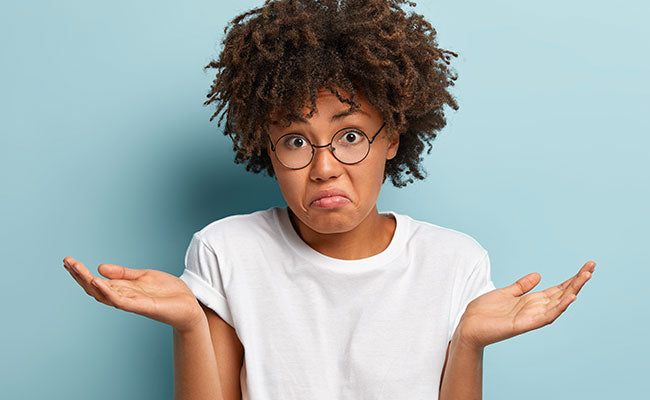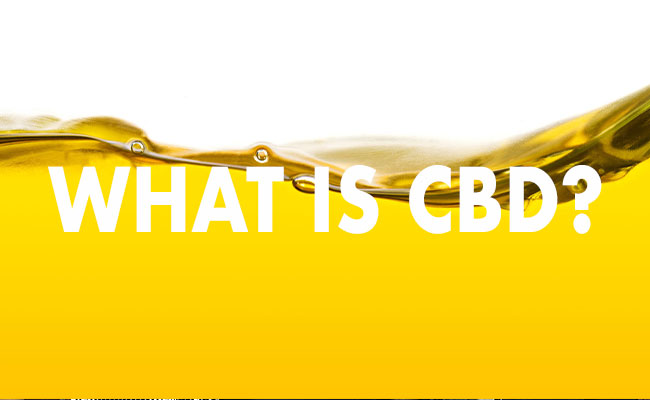
CBD vs. CBDa
WRITTEN BY SHALINI RANA AND DR. SWATHI
Americans are increasingly turning towards using cannabis for medical reasons. What many people don’t know is that the cannabis plant has many components called cannabinoids. Some examples are cannabidiol (CBD) and cannabidiolic acid (CBDa). But what exactly is the difference between these two? Let’s take a deeper dive into their makeup, their benefits, and their key differences.
What is the difference between CBD and CBDa?
CBD is one of the most widely known and studied cannabinoids. It is known for its potential effects on soothing pain and stabilizing mood. It can be synthesized in the lab or can be produced indirectly by the cannabis plant. The form of CBD that occurs naturally in the plant itself is CBDa, and CBDa can be converted to CBD by being exposed to high heat or light–the fancy science term for this being decarboxylation [2,6]. CBDa has different binding properties than CBD and follows different receptor pathways to produce different effects.
What are the benefits of CBD?
CBD modulates the endocannabinoid system with overall weak affinities for the cannabinoid receptors (read more about the CB1 and CB2 receptors here). Instead, CBD has been found to bind to over 65 targets in the body [4], and therefore has many other potential therapeutic benefits [1]. Some of these receptors include:
-
The Serotonin 5HT1a Receptor: Binding to the 5HT1a serotonin receptor allows CBD to have mood-stabilizing effects, as well as potential effects on reducing appetite, sleep, nausea, and pain [4]. Also, since this is a serotonin receptor, and serotonin boosts mood, many people find CBD useful with mental health [2].
-
The GPR55 Receptor: GPR55 is a receptor found mainly in the brain, and it mediates blood pressure and bone strength. Studies suggest that CBD blocks this receptor from inducing the breakdown of certain components of our bones. Therefore, CBD can help with optimizing bone density (overactivity of GPR55 and weakening of bones) [4].
-
The TRPV1 Receptor: The TRPV1 receptor mediates pain, inflammation, and body temperature. By binding to this receptor, CBD can help reduce the perception of pain [4]. This receptor is found densely in the skin, contributing the potential benefits of cannabinoids, like CBD, in skincare.
-
The PPAR Receptors: These receptors play a role in modulating many inflammatory processes in the body. Through these receptors, CBD has been shown to have potential benefits in many conditions such as those concerning neurodegeneration [4].
The current most popular uses of CBD include soothing discomfort or occasional pain, balancing mood, and improving sleep [5]. Although cannabinoids are becoming more popular, it is important to note that there is still much to be studied about CBD’s therapeutic potential.
What are the benefits of CBDa?
Similar to CBD, CBDa also lacks the ability to strongly bind to the CB1 receptor and therefore also lacks euphoric effects. Even less research has been done on CBDa than on CBD. What we do know is that CBDa may be more potent than CBD, and smaller amounts may be needed to achieve therapeutic benefits [2]. Studies in animals have shown that CBDa was 10x more potent than CBD in seizure models, 100x more potent in inflammatory models, and 10,000x more potent in anxiety models, but there is a lack of extensive human research in this area [2].
CBDa has the following receptor binding effects:
-
The Serotonin 5-HT1a Receptor: Based on animal studies, CBDa has an even stronger affinity for the 5-HT1a than CBD, giving it potentially stronger effects than CBD [1,4].
-
The TRPV1 Receptor: As mentioned above, this receptor can play a part in reducing the perception of pain [2].
-
Inhibits the COX-2 Enzyme: The COX-2 enzyme is one of the main promoters of inflammation in the body. It works to promote the release of inflammatory mediators. By inhibiting this enzyme, CBDa may have potent anti-inflammatory effects.
Key Differences Between CBDa and CBD
Research has found some notable differences between these two molecules. For one, CBDa is better absorbed when taken orally than CBD [2]. Therefore, in oral formulations containing CBDa, you might experience its effects at lower doses. As mentioned previously, CBDa may be more potent than CBD (meaning it takes a smaller dose to reach the same effects) and may have a greater anti-inflammatory strength than CBD, so this once again correlates to lower doses being needed. With lower doses comes a smaller risk of experiencing potential adverse effects.
Another key difference between the two is that while CBDa has no effect on the cannabinoid THC, CBD has been found to inhibit THC to an extent. THC is the component of cannabis that produces euphoria and that feeling of “being high” [2]. So, taking a CBD product with a THC may cause reduced euphoria, which may be unwanted by some users. On the other hand, CBD has been shown to be able to reduce some of the adverse effects caused by THC, such as anxiety, appetite, and fast heart rate [6].
What do typical products containing CBD or CBDa typically look like?
Either of these molecules can be found alone or in combination in formulations such as oils, tinctures, topicals. Some people juice the plant to get the freshest form of CBDa, but remember that CBDa can undergo metabolism and turn into CBD [5].
Many products currently on the market containing both CBD and CBDa will have a larger percentage of CBD with a much smaller amount of CBDa. The reason for this, as well as the reason why many pure-CBDa products do not exist on the market, is because CBDa is very unstable, so it is difficult and costly to manufacture it into a stable formulation. Additionally, many consumers may accidentally transform it into CBD by improperly storing it [5].
What product is right for me? How do I figure out whether I need CBDa in my product?
One doctor recommends starting with a trusted CBD brand that contains a small amount of CBDa [2]. There is a lot of variability between patients in terms of their response to cannabinoids, so it is recommended to initiate all products in small doses. You should only continue to a product with a greater amount of CBDa if you know that you respond well to CBDa, or if you have tried CBD in the past and are unsatisfied or unresponsive [2], or if you are using THC and you don’t want the possible inhibition caused by CBD [2]. Finally, it is recommended to use a product that contains both CBD and CBDa, as they both can boost each other’s effects [5].
References
-
Cannabinoid Clinical: Cannabinoids Research, Effects, and Uses. CannabinoidClinical.com. Accessed Nov 2022. https://www.cannabinoidclinical.com/cbd-vs-thc.
-
Sulak D. CBD and CBDA: What’s Right For You? green-flower.com. January 11, 2021. Accessed Nov 2022. https://news.green-flower.com/cbd-and-cbda-whats-the-difference-and-which-is-best-for-me/
-
CBDA Vs. CBD: What Are the Differences? newphaseblends.com. Accessed Nov 2022. https://www.newphaseblends.com/cbda-vs-cbd-explained/
-
How CBD Works. projectcbd.org. Accessed Nov 2022. https://www.projectcbd.org/science/how-cbd-works
-
Greenside Recreational. The Difference Between CBD and CBDA. greensiderec.com. April 1, 2021. Accessed Nov 2022. https://greensiderec.com/the-difference-between-cbd-vs-cbda/
-
Formato M, Crescente G, Scognamiglio M, et al. (-)-Cannabidiolic Acid, a Still Overlooked Bioactive Compound: An Introductory Review and Preliminary Research. Molecules. 2020;25(11):2638.
–
This article was edited by Dr. Swathi and was written by Element Apothec Scientific Communications Intern, Shalini Rana. She is a Doctor of Pharmacy (PharmD) candidate at Rutgers University Ernest Mario School of Pharmacy in Piscataway, New Jersey.











